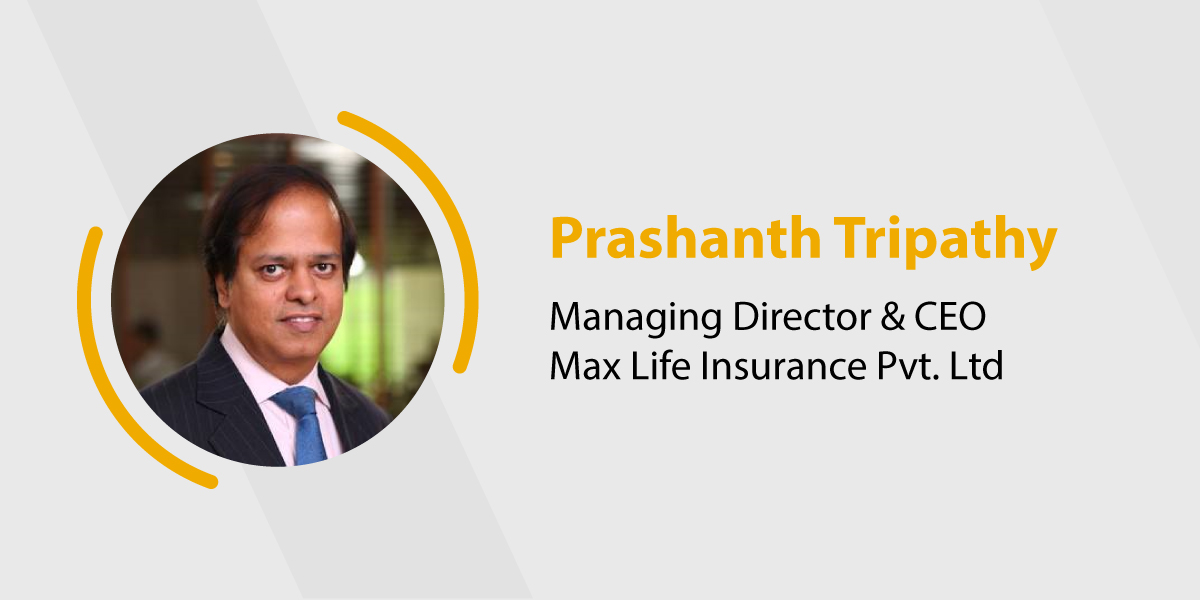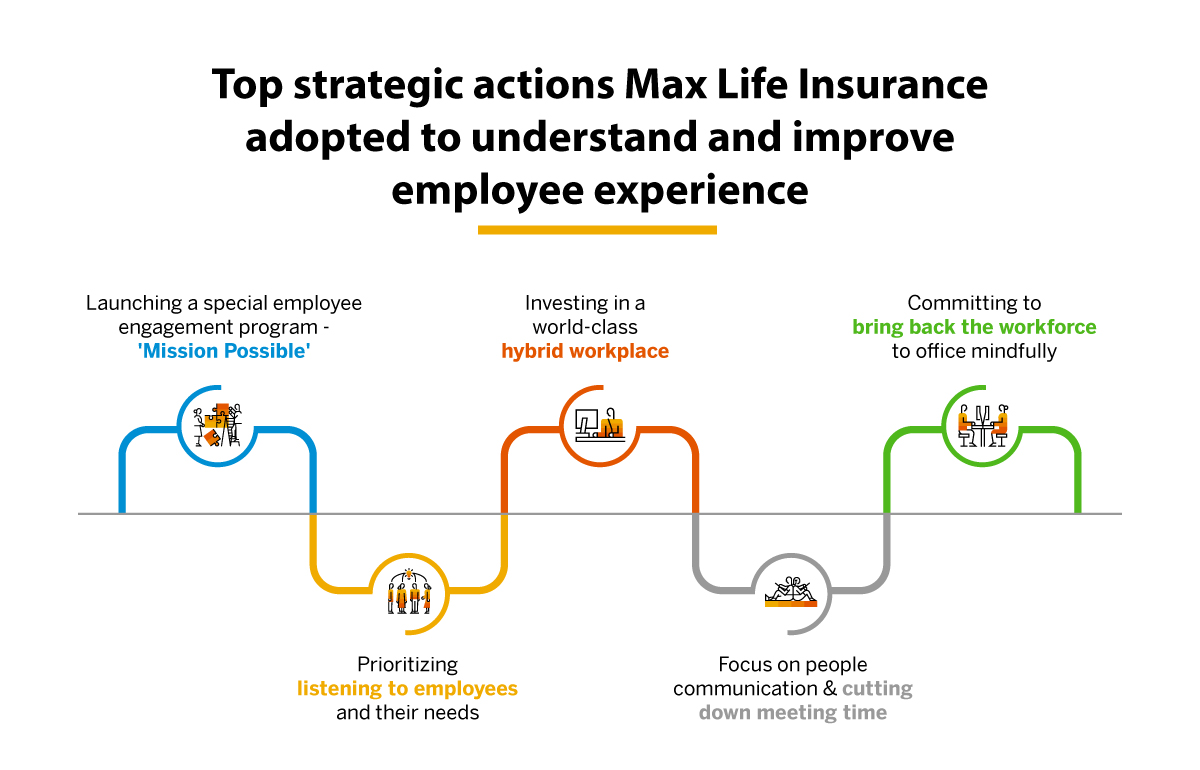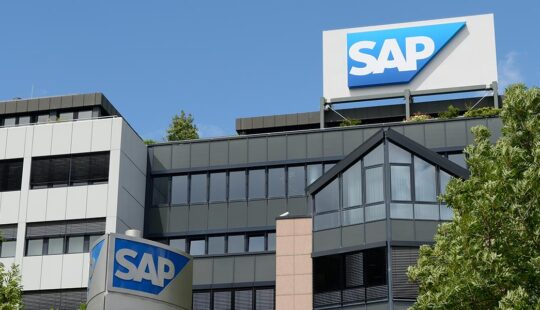2020 ushered us into a new way of working. Organizations are now moving to investing and setting up infrastructures to provide a superior work experience to their people– Hybrid 2.0. SAP organized the SAP HR Connect 2021 to throw some much-needed light on how we can design employee experiences for the hybrid 2.0 world that are holistic, progressive, agile, technology-driven, and most importantly, more human!
As part of the opening keynote, Prashanth Tripathy, Managing Director & CEO, Max Life Insurance Pvt. Ltd., shared some critical insights into trends that are creating lasting impacts on the workforce and workplace. And the importance of building progressive employee experiences that expand the definitions of productivity, collaboration, and employee well-being in the post-pandemic world.

The unfolding events of the COVID-19 outbreak have undoubtedly impacted the way the workforce is interacting and working with each other. Organizations are looking for creative solutions to maintain balance between their 2 main objectives of sustaining rapid growth and creating a positive employee experience.
Explaining how Max Life Insurance experienced its best 18 months since its inception 20 years ago, Prashanth pointed out some key trends. And shared how his organization tackled these ups and downs to achieve business goals of hyper-productivity, agility, and flexibility through a progressive employee experience tailored for a hybrid world.
Key Trends Transforming Employee Experiences
Rise of True Digitization
Before the disruptions caused by the pandemic and the consequent lockdowns, the digital journey was simply a fad that every CEO seemed to be on. The current work scenario has created a paradigm shift. To deliver on business outcomes more efficiently, while remaining a great place to work organizations across the globe are re-evaluating and doing more to support their move towards digitization.
Global Talent Competitiveness
The shift to remote work also means that we are now competing for talent at a global level. People today can work from any market, serving any company. The entry-exit barriers created by geography have slowly but surely dissolved, leaving us with a new challenge to find creative ways to retain our position as great employers, among almost the whole world.
The “Phygital” Workspace
As a critical enabler of business and economic continuity, remote working has shown us that physical presence for work is out of the window. It’s a new world and organizations need to differentiate themselves based on flexibility to meet employee needs. Creating a “Phygital” world – that brings in digital and interfaces it with the physical set-up to perfectly fit in the new normal which seems to be the way ahead.
No One Solution to Fit All
Organizations will have to strike the optimal balance between the physical and digital, that works best for them. Solutions cannot be generic for industries or the world at large, as every company and its employee needs will differ depending on their work models and business goals. All companies will have to strike their own balance.
Importance of Company Culture
The culture of an organization, its purpose, and values are some of the most important things that anchor and bind the workforce. At a time when departments within organizations are physically divided across geographies, the consequent flexibility can impede creating strategies that align the workforce and is a challenge that needs much thought.
Supervision is Passe
The last 18 months have made it clear that most organizations do not need supervisors. It has been observed time and again that if we are not careful this supervisory layer can create havoc by shifting the balance from discussions, creativity, or brainstorming to mere reviews. Instead, organizations need to divert efforts to engage and create deeper connections with employees, so they feel heard and appreciated.
Work-life Balance Matters
We have all experienced the slow deterioration of the quality of work-life balance since the beginning of the work-from-home era. A direct result of the reduced productivities as compared to how well we used to work cross-functionally in a physical set-up. It is not as simple as just walking up to someone’s desk anymore. Collaborations of any kind today, require setting up calls and setting aside time from our already busy schedules.
How Max Life Insurance Re-invented its Employee Experiences for Hybrid 2.0
As soon as the lockdown was in place the team came together to outline a purpose and path to differentiate themselves in the market. Keeping a close watch on trends and tirelessly working toward creating a unified purpose, helped Max Life Insurance to realize and outdo its business goals, despite the challenging times.

Prashanth detailed some of the actions his organization adopted to maintain the equilibrium required between employee centricity, morale, motivation, and the business outcomes that were expected.
- Launching a special program called ‘Mission Possible’ with a focus on surviving against the adversity of the pandemic. This was done via different reward and recognition mechanisms, listening forums, engagement avenues, as well as presenting a simplified way to operate in a digital setup. Successfully mirroring, replicating, and creating an optimum way of work resulting in a steep increase in market share, rather quickly.
- Secondly, they always listened. The need to listen has multiplied many times over the last 18 months. While earlier listening avenues were restricted by hierarchy, the team now spent at least a couple of hours were spent talking to people, to identify problems. Pulse surveys were also conducted every 2 months to understand the ground reality and quickly finding solutions to the reported problems.
- As the workforce shifted from the physical workspace, the organization made huge investments to enable teams with tools, training, WFH infrastructures, and designing a world-class hybrid workplace. This new adaptable workspace will be welcoming its head office staff of over 2000 employees, to a hot-desking setup, where people can come in anytime they feel like.
- People communication and cutting down on meeting time is another area of focus. In the era of zoom and teams, meetings can eat into a lot of productive time. To combat this, “Do-Not-Disturb” time has been scheduled between 1-2 pm every day. No meetings are to be scheduled, and people are discouraged from calling their peers during this time. The company is also contemplating declaring a couple of days a month as “Off-Meeting Days”. This will give people time to prioritize work deliveries, rather than attending meetings.
- As a workforce predominantly consisting of the sales team, 85% to be exact, Max Life Insurance acknowledges that is never going to be a 100% digital company. It believes that to maintain a great culture and value system, human face-to-face interactions are foundational and is working towards bringing back its people to the office slowly. At the same time, they are committed to being mindful of the personal needs of each employee.
In closing, as an organization run by people, we need to recognize the importance of the human touch, but what is required more than that is to continue inspiring people to deliver on the expected business outcomes by aligning our people with our strategies. Ensuring that there is a common thread that ties the entire workforce together can help in this endeavor.



